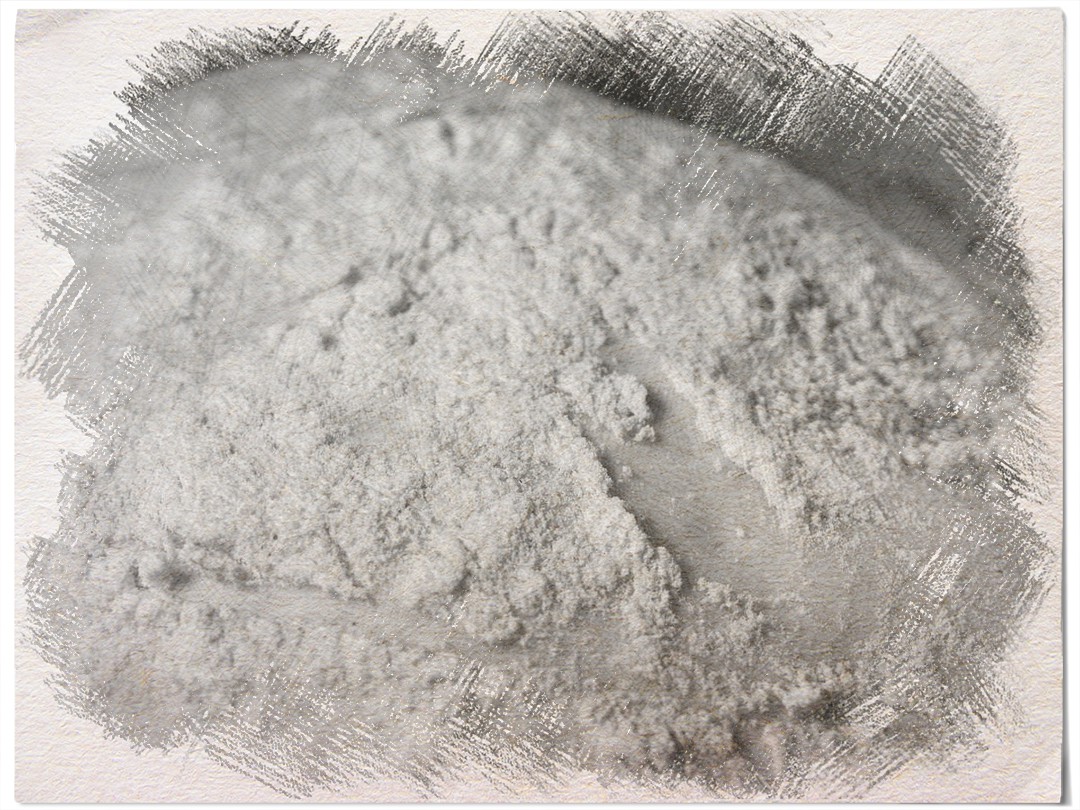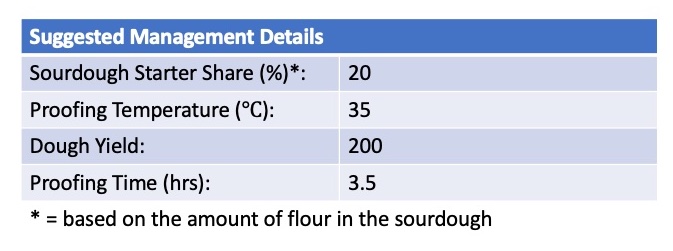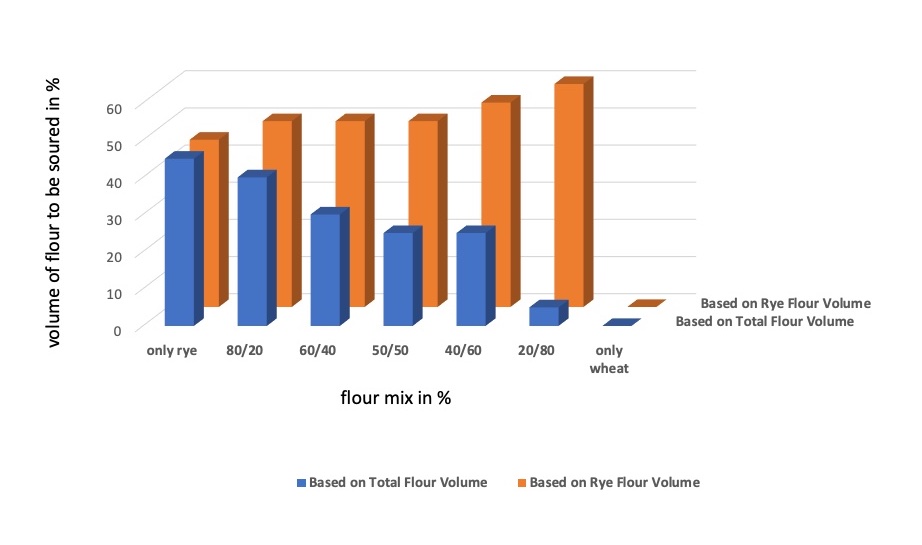Berlin single-step-sour

This could be translated to something like Berlin one-step sourdough and is a sourdough management technique that is the shortest know method to provide a sourdough for bread-making.
It’s a single step method that is using with 20% a relatively high amount of sourdough starter, running the sourdough development process at a high temperature (around 30-35oC) and for a relatively short period of ripening time (around 3 1/2 hours). The short ripening time leads to comparatively low acidity levels in the ripe sourdough.
The high temperatures during fermentation predominantly favor the conversion through homofermentative lactobacilli, so that comparatively higher proportions of lactic acid are obtained in a short time. This results in a milder tasting bread with comparably low acidity levels when using this management technique. Longer ripening times result in a shift in the lactic acid / acetic acid ratio in favour of acetic acid and thus a somewhat more balanced taste in bread.
The results of this technique are on par with any of the other, multi-step sourdough management techniques, however because of the short ripening time, it is not widely used by professional bakers as the ripening and subsequent usage times are not very aligned with the working times of the bakers. For the home use, it is one of the ideal management technique that can be used next to the Weinheim Single Step method – simple and short and it will give great results when applied to any sourdough based bread.
Have a look at the following diagrams that give you some suggestions in adjusting the process to give the results you want to get when using this technique. What is being displayed here in the next two figures show the suggested configuration of the sourdough management technique for the Berlin one-step sour (BOSS).


The next graph shows you the dependencies of the sourdough volume that is to be soured in relation to the flour mixture and volume you have.

The volume to be soured is the volume of flour you need to take from the total flour for the dough and prepare your sourdough with. There are some standard suggested values as to how much you should be souring. Normally the souring percentage refers to the rye component.
Example
Let’s construct an example from the details above and lets assume you have a recipe to make a loaf of bread that uses 1000 gr. of flour with a 80/20 ration (800 gr. Rye and 200 gr. Wheat). Your should aim for a 40% of flour souring (remember you are souring the rye). This would mean you need to make out of 320 gr. of the rye component a sourdough.
Considering what we said earlier about the 20% of starter, the DY of 200 and the 40% of souring, you would need to do the following:
- Take away from the 800 gr. of rye a total of 320 gr. and put it aside on a separate stack.
- Take 64 gr. of your sourdough starter.
- Take 128 gr. rye flour from the stack of 320 gr.
- Combine the 128 gr. of rye with 128 gr. of warm Water and the 64 gr. of starter.
- Mix these together and ferment them at 35 oC for 3 1/2 hours.
- The remaining 192 gr. of the stack of flour can be returned to storage (don’t add them back to your recipe)
After the 3 1/2 hours you have a sourdough base on the Berlin single-step method which is ready to be added to your remaining recipe ingredients and you can proceed making your bread.
As reminder – make sure you check the pH value of your sourdough and don’t let it fall below 4,1 or you will find your bread may become too sour for your taste.
